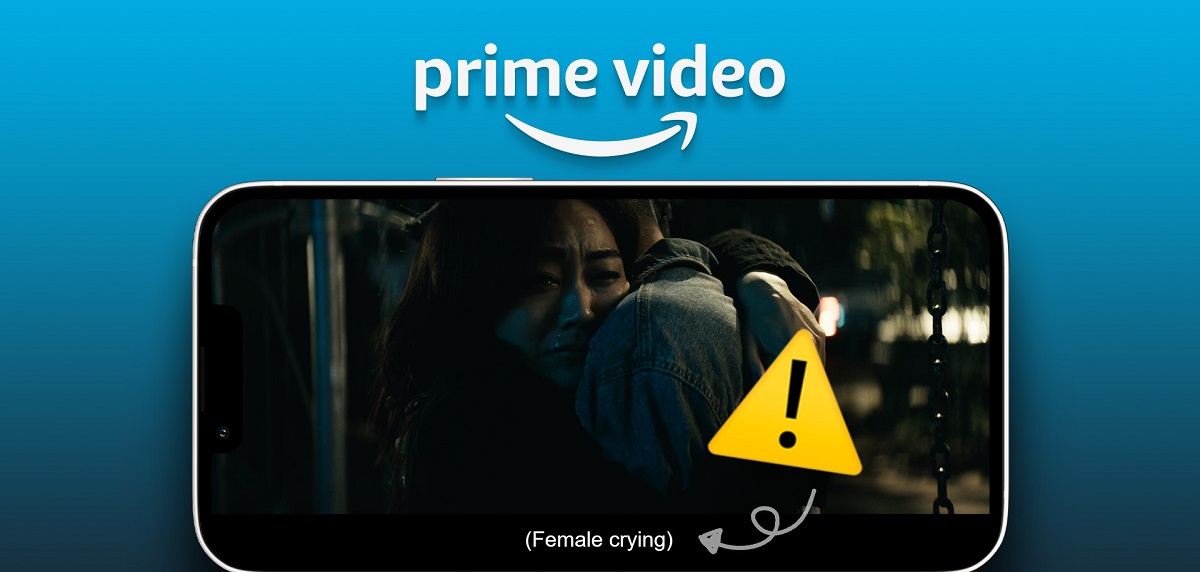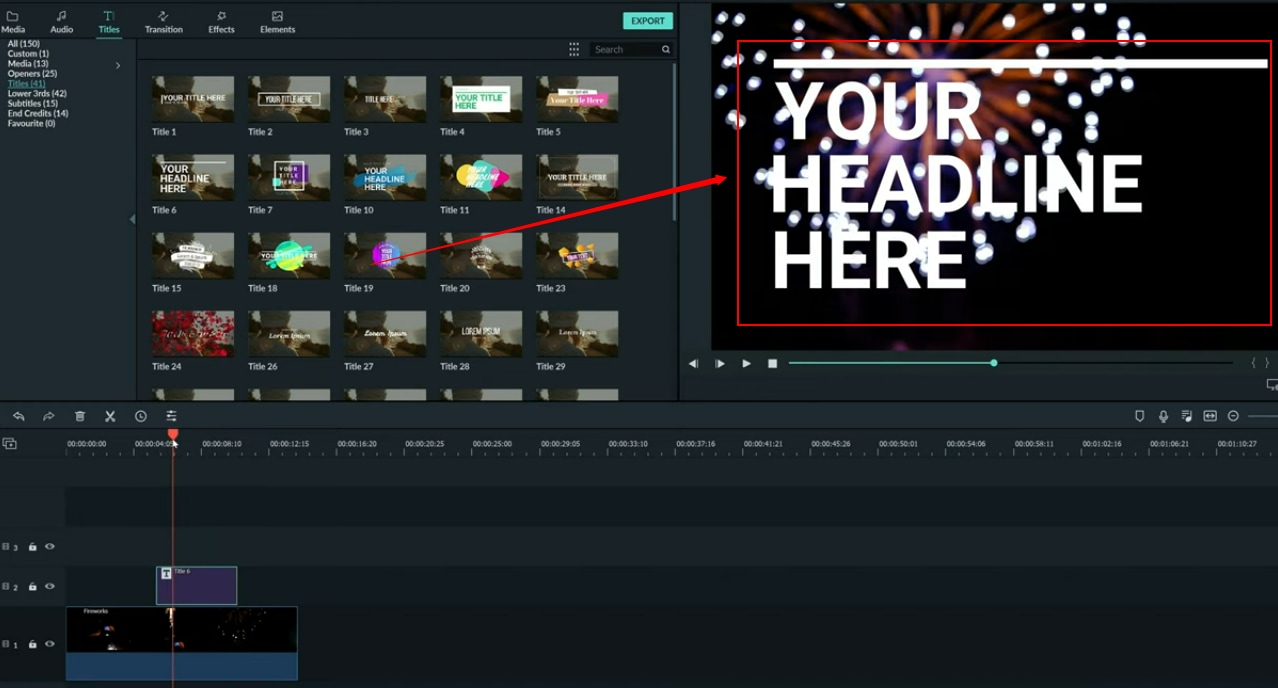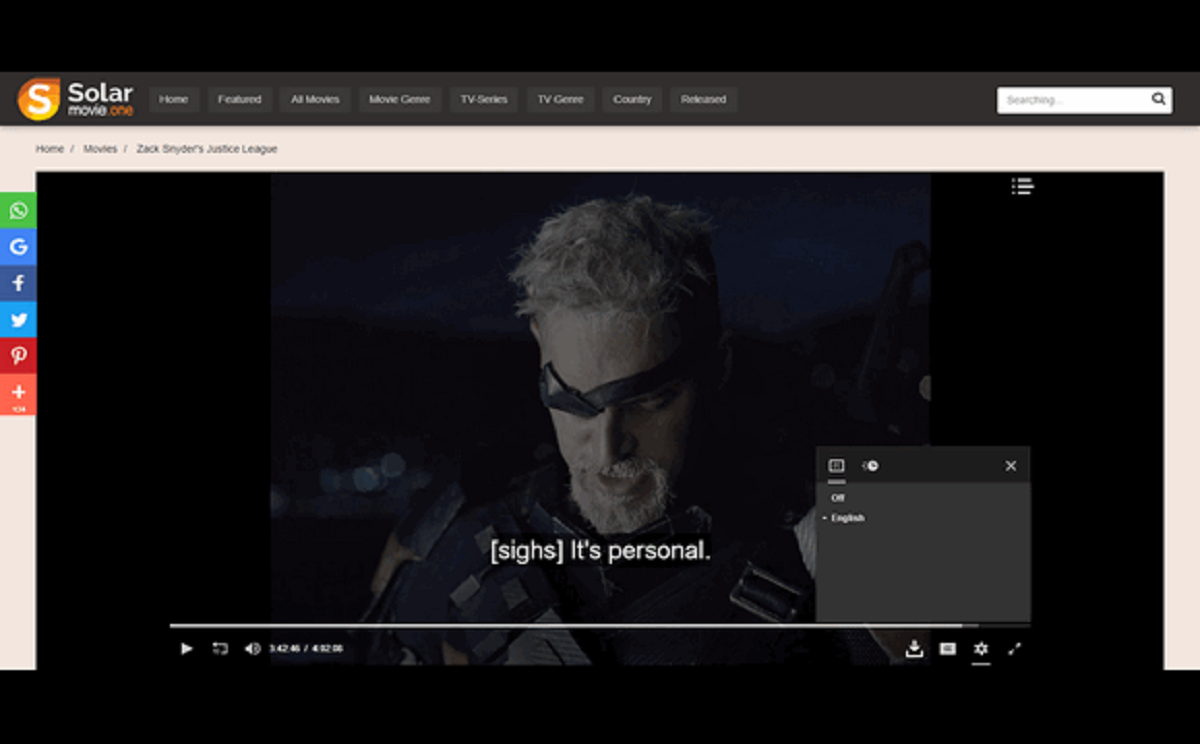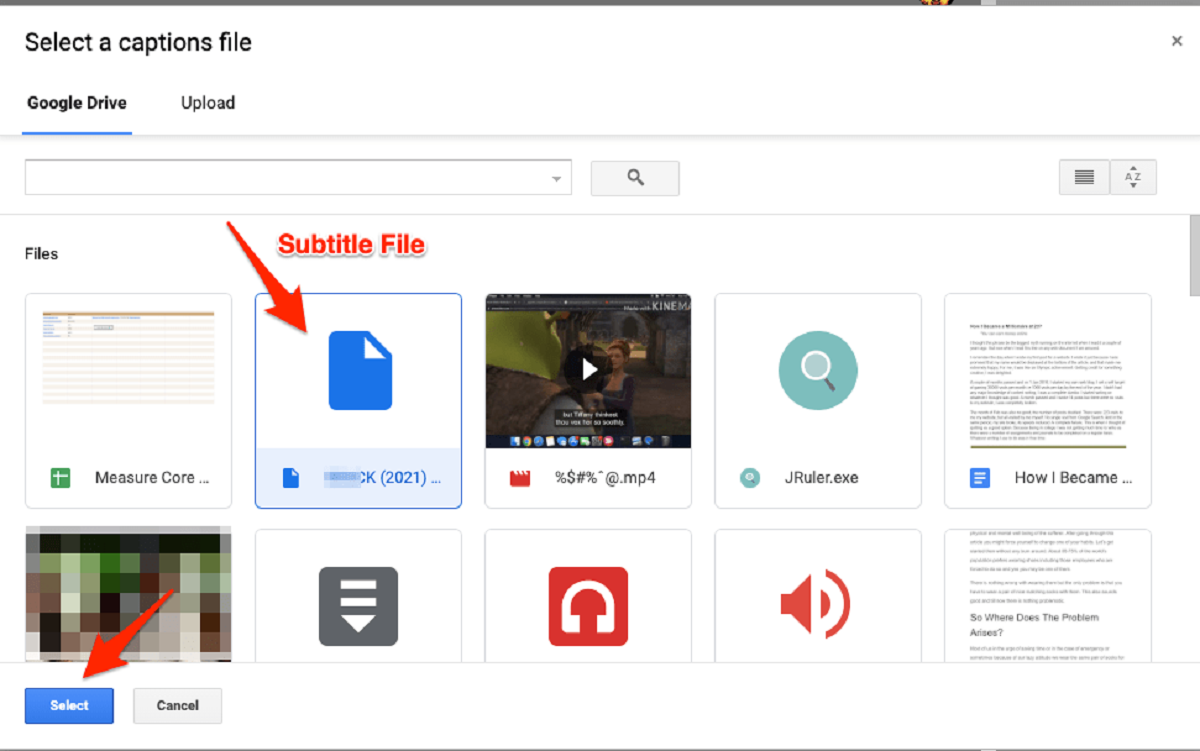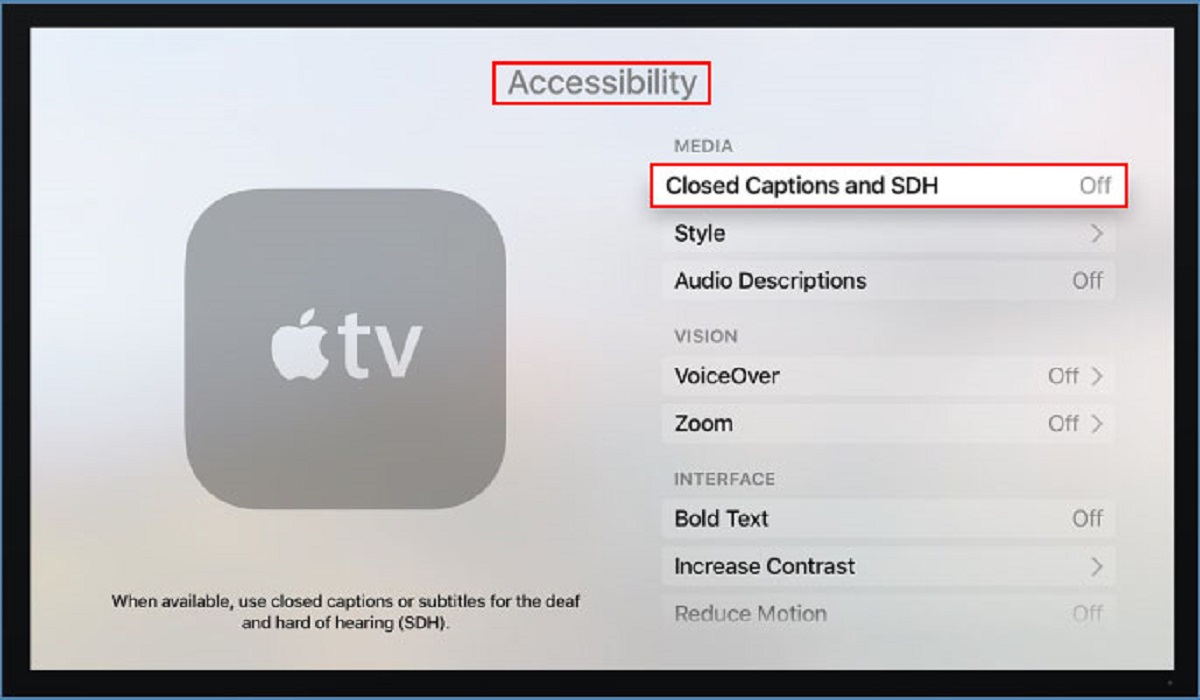Introduction
Subtitles are a crucial component of multimedia content that have revolutionized the way we consume and understand audiovisual media. Whether you’re watching a movie, TV show, or online video, subtitles provide a textual representation of the dialogue or narration in the form of synchronized captions. These captions are displayed on the screen, typically at the bottom, allowing viewers to read along while they watch.
The use of subtitles has a long history, dating back to the early days of cinema when silent films relied on intertitles to convey dialogue and plot points. Today, subtitles have evolved into a sophisticated medium that serves multiple purposes, catering to a global audience with diverse language preferences, hearing impairments, or simply those seeking to enhance their viewing experience.
Subtitles not only facilitate accessibility and inclusivity but also contribute to the overall immersive experience of the content. They enable viewers to understand and appreciate media in different languages, allowing for cross-cultural exchange and expanding the reach of films and shows beyond their native audience.
The impact of subtitles extends beyond language barriers. They play a significant role in improving reading skills, enhancing comprehension, and fostering language learning. Research has shown that subtitles can aid in vocabulary acquisition, grammar comprehension, and overall language proficiency. Additionally, subtitles can be seen as a valuable tool for individuals with learning disabilities, offering support in literacy development.
In recent years, advancements in technology have revolutionized the subtitling process. Automated systems, such as speech recognition and machine translation, have facilitated the creation of subtitles more efficiently. However, the task of subtitling still requires human expertise to ensure accuracy, timing, and proper formatting.
In this article, we will explore the various types of subtitles, the process of creating subtitles, the challenges faced in subtitling, and the importance of subtitles in today’s multimedia landscape. We will also discuss the differences between subtitles and dubbing, and provide some tips on how to effectively use subtitles for an enhanced viewing experience.
Historical Background
The use of subtitles in audiovisual media can be traced back to the early 20th century when silent films were the dominant form of entertainment. In those days, intertitles were used to display text on the screen to convey dialogue, narration, and essential plot points to the audience. These intertitles were often separately filmed on cards or included in the film during the editing process.
As the film industry progressed and sound technology was introduced, the need for intertitles diminished. However, the demand for subtitles for foreign-language films began to emerge. In the 1930s, films from different countries started to make their way into international markets, necessitating the inclusion of subtitles to bridge the language gap.
Initially, subtitles were created by physically adding printed text on the film reel itself. This process involved painstaking precision and was labor-intensive. The arrival of digital technology in the late 20th century revolutionized the subtitling process, making it more efficient and cost-effective.
With the advent of DVDs and Blu-ray discs, subtitles became an integral part of home entertainment. Viewers could now choose different subtitle tracks to accompany foreign-language movies or enable closed captions for the hearing impaired. The widespread availability of DVD players and the ability to toggle subtitles on and off further popularized their usage.
In the modern era of streaming platforms and online media, subtitles have become even more prevalent. Services like Netflix, Amazon Prime, and Hulu offer a wide range of subtitled content in multiple languages. These platforms utilize advanced subtitling techniques, including timed text files that can be toggled on and off and customizable subtitle options based on user preferences.
Over the years, subtitling has evolved from a necessity for international distribution to a feature that enhances the accessibility and viewer experience. Improved software tools and machine-based translations have made the production of subtitles faster and more accurate.
While subtitling techniques have significantly advanced, the fundamental purpose remains the same – to provide a written representation of spoken dialogue or narration that allows viewers to follow along and understand the content.
In the following sections, we will delve deeper into the intricacies of subtitles, including the different types, the process of creating them, the challenges faced by subtitlers, and their significance in today’s multimedia landscape.
What are Subtitles?
Subtitles are textual representations of the dialogue or narration in audiovisual media, such as movies, TV shows, and online videos. They provide a translation or transcription of the spoken words, allowing viewers to follow along and understand the content. Subtitles are typically displayed at the bottom of the screen in a synchronized manner, ensuring that they align with the corresponding audio.
Subtitles serve various purposes, catering to different audiences and needs. For films and shows in foreign languages, subtitles offer a means for viewers who do not understand the original language to enjoy the content. They provide a translated version of the dialogue, allowing viewers to follow the plot, understand the jokes, and fully engage with the material.
In addition to translation, subtitles are also used for accessibility purposes. Closed captions, which are a form of subtitles, provide a written representation of the audio for viewers with hearing impairments. Closed captions include not only the dialogue but also descriptions of sound effects, music, and other audio cues, allowing individuals with hearing difficulties to fully experience the content.
Subtitles can also be used to aid individuals who are learning a new language. By providing a written transcript of the spoken words, subtitles enhance comprehension and facilitate language acquisition. Viewers can read along while listening to the dialogue, improving their vocabulary, grammar, and overall language proficiency.
Moreover, subtitles can be beneficial in environments where the audio cannot be heard, such as public places or situations where silence is required. For example, watching a video on a mobile device without headphones becomes feasible when subtitles are available, ensuring that viewers can still understand the content without disturbing others.
As technology continues to advance, subtitles have become more versatile and customizable. Many streaming platforms and media players offer the option to enable or disable subtitles, choose from different language tracks, adjust the font size and style, and even customize the placement and appearance of the subtitles on the screen.
It’s worth noting that subtitles should be accurate, well-timed, and properly formatted for a seamless viewing experience. Skilled subtitlers ensure that the subtitles match the onscreen action, convey the intended meaning, and are easy to read and understand.
In the next sections, we will explore the different types of subtitles, the process of creating them, the challenges faced by subtitlers, and the importance of subtitles in the media industry.
Types of Subtitles
Subtitles come in various formats and styles, catering to different viewing preferences and needs. Understanding the different types of subtitles can enhance the viewing experience and facilitate accessibility. Here are some common types of subtitles:
- Open Subtitles: Open subtitles are permanently embedded in the video content and cannot be turned off. They are typically used in situations where the language of the dialogue differs from the language of the target audience. Open subtitles are commonly found in movies or shows where the original language is not widely understood by the intended viewers.
- Closed Captions: Closed captions are a specialized form of subtitles designed for individuals with hearing impairments. They not only include the dialogue but also provide descriptions of sound effects, music, and other auditory elements in the content. Closed captions are typically displayed as a separate track that viewers can enable or disable, depending on their needs.
- Subtitles for the Deaf and Hard of Hearing (SDH): SDH subtitles are similar to closed captions but take accessibility a step further. In addition to providing dialogue and audio descriptions, SDH subtitles also include other relevant information, such as speaker identification, environmental cues, non-verbal indications, and off-screen sound effects. SDH subtitles aim to provide a comprehensive and inclusive viewing experience for individuals who are deaf or hard of hearing.
- Forced Subtitles: Forced subtitles are used in situations where there are segments of dialogue or text that are essential for the plot, even if the majority of the content is in the viewer’s native language. These subtitles are displayed automatically without viewer intervention. For example, in a movie that includes a few scenes with a different language, forced subtitles will appear only during those specific parts.
- Bilingual Subtitles: Bilingual subtitles are designed for viewers who are bilingual or studying a foreign language. They display two sets of subtitles simultaneously, typically with the original language at the top and the translated language at the bottom. Bilingual subtitles allow for easy comparison and understanding of the two languages.
- Verbatim Subtitles: Verbatim subtitles aim to provide a precise and accurate representation of the audio, matching the spoken words and expressions as closely as possible. They are often used in documentary films or interviews where preserving the original dialogue is crucial.
- For Children: Subtitles for children are specifically adapted to cater to the needs of young viewers. They feature simplified language, larger fonts, and more straightforward sentence structures to ensure ease of comprehension for younger audiences.
It’s important for content creators and subtitlers to select the appropriate type of subtitles based on the target audience, their preferences, and the nature of the content. By offering various subtitle options, media platforms can ensure inclusivity and accommodate a broader range of viewers.
In the next section, we will explore the process of creating subtitles, covering the intricate steps involved in bringing accurate and synchronized captions to audiovisual media.
How are Subtitles Created?
The process of creating subtitles requires a combination of technical expertise, linguistic proficiency, and meticulous attention to detail. Although there are variations depending on specific tools and workflows, the general steps involved in creating subtitles are as follows:
- Transcription: The first step in creating subtitles is transcribing the audio. This involves listening to the dialogue or narration in the video and converting it into a written format. Transcribers carefully listen to the audio, noting the timing, speaker identification, and any other important audio cues or non-verbal elements.
- Translation (if applicable): If the video content is in a foreign language, translation is necessary to provide subtitles in the viewer’s language. Professional translators accurately translate the transcribed text, ensuring that the translated subtitles convey the intended meaning and maintain synchronization with the video.
- Timing and Synchronization: Once the transcription or translation is complete, the next step is to time the subtitles. During this process, subtitlers assign timecodes to each line of text, indicating when the subtitles should appear and disappear on the screen. This ensures that the subtitles are properly synchronized with the dialogue or narration, allowing viewers to read along seamlessly.
- Formatting: Subtitles need to be properly formatted to ensure clarity and readability. Subtitlers adjust the font type, size, and color of the text, as well as the background and positioning of the subtitles on the screen. Proper formatting helps viewers distinguish between different speakers, follow the dialogue effortlessly, and avoid obstructing important visuals.
- Quality Control: Once the subtitles are created and formatted, a quality control phase takes place to review and rectify any errors or inconsistencies. This involves checking for spelling and grammar mistakes, verifying the accuracy of translations, and ensuring that the subtitles align perfectly with the audio and visuals.
- Delivery and Distribution: After the subtitles go through quality control, they are ready for delivery and distribution. Subtitles are typically delivered as separate subtitle files in formats such as SubRip (.srt) or WebVTT (.vtt). These subtitle files can be uploaded to platforms or media players that support subtitling, allowing viewers to select and display the subtitles while watching the content.
To streamline and expedite the subtitling process, professional subtitlers often utilize specialized software and tools specifically designed for creating and managing subtitles. These tools help automate certain aspects of the process, facilitate accurate synchronization, and ensure adherence to industry standards.
It’s important to note that subtitling requires significant expertise and experience, especially when dealing with complex content or challenging translation scenarios. Professional subtitlers possess a deep understanding of audiovisual media, linguistic nuances, and cultural contexts, enabling them to deliver accurate and high-quality subtitles.
In the next section, we will explore the subtitling process in more detail, covering the challenges faced by subtitlers and the strategies they employ to overcome them.
Subtitling Process
The subtitling process encompasses the various stages involved in creating accurate and synchronized subtitles for audiovisual media. While the specific workflow may vary depending on the project and tools used, the following steps outline a typical subtitling process:
- Preparation: Before diving into the actual subtitling, subtitlers familiarize themselves with the project requirements, target audience, and any specific guidelines provided. They assess the audiovisual material, identifying dialogue, narration, and any other relevant audio cues or non-verbal elements that need to be captured in the subtitles.
- Transcription: Subtitlers transcribe the spoken words, converting the audio into written text. This involves carefully listening to the dialogue or narration and transcribing it accurately. The transcription acts as the foundation for the subsequent subtitle creation process.
- Translation (if applicable): If the project requires translating the content into a different language, professional translators carry out this crucial step. They ensure that the translated subtitles convey the original meaning while considering cultural nuances and maintaining synchronization with the video.
- Timing and Synchronization: In this step, subtitlers synchronize the subtitles with the audio and visuals. They assign timecodes to each line of text, determining when the subtitles should appear and disappear on the screen. Proper timing ensures that the subtitles align perfectly with the spoken dialogue or narration.
- Formatting: Once the timing is set, subtitlers format the subtitles to enhance clarity and readability. They adjust the font type, size, color, background, and positioning of the subtitles, ensuring that the text remains legible without obscuring important on-screen visuals.
- Review and Editing: After the initial subtitling is complete, a thorough review and editing process take place. This involves checking for spelling and grammar errors, verifying the accuracy of translations (if applicable), and ensuring proper synchronization with the audio and visuals. Quality control measures are implemented to maintain the highest standard of subtitling accuracy.
- Delivery and Compatibility: Once the subtitles pass rigorous quality control, they are delivered in standardized subtitle file formats, such as SubRip (.srt) or WebVTT (.vtt). These files can be easily integrated into various media players and platforms, allowing viewers to select and display the subtitles while watching the content.
- Revision and Localization: For international distribution, the subtitles may undergo further revision and localization to cater to specific linguistic and cultural requirements of different regions. This may involve adapting the subtitles to local idioms, conventions, or audience preferences, ensuring that the content remains accessible and relatable across different cultures.
The subtitling process demands a keen eye for detail, linguistic proficiency, and technical skills. Subtitlers must accurately capture the essence of the dialogue, maintain synchronization, and provide subtitles that are aesthetically pleasing and comprehensible to viewers.
Subtitling software and tools play a significant role in simplifying and expediting the subtitling process. These tools provide features that automate certain aspects, such as audio waveform visualization, timecode synchronization, and formatting options, allowing subtitlers to work more efficiently and deliver high-quality subtitles.
Overcoming challenges such as tight deadlines, complex translations, or specialized content requires expertise and experience in the field of subtitling. Skilled subtitlers utilize their knowledge and employ strategies to overcome these challenges, ensuring that the final subtitles are accurate, synchronized, and enhance the viewer’s experience of the audiovisual content.
In the next section, we will delve into the challenges commonly faced by subtitlers and examine the importance of overcoming these obstacles to produce quality subtitles.
Challenges in Subtitling
Subtitling is a complex task that comes with its own set of challenges. From linguistic considerations to technical limitations, subtitlers face several obstacles in their quest to provide accurate and effective subtitles. Here are some common challenges in subtitling:
- Limited Time and Space: One of the primary challenges in subtitling is the constraint of time and space. Subtitlers must convey the essence of the dialogue or narration within a limited number of characters and lines. This requires condensing the text without compromising the meaning or context, ensuring that the subtitles can be easily read and understood within the given time constraints.
- Translation Accuracy: When dealing with content in multiple languages, translating the dialogue accurately is crucial. Translators must capture the nuances, cultural references, and wordplay present in the original language while ensuring that the translation maintains synchronization with the video. Finding equivalent expressions and idioms that resonate with the target audience can be challenging.
- Dialects and Accents: Subtitling content that features characters with different accents or dialects can pose significant challenges. It requires careful consideration to accurately represent the variations in speech, ensuring that the subtitles capture the intended pronunciation and dialect without overwhelming the viewer with excessive text.
- Text Reading Speed: Subtitlers need to ensure that the reading speed of the subtitles matches the viewer’s reading capabilities. Subtitles that appear and disappear too quickly can cause frustration, while excessively long subtitles can distract from the onscreen action. Striking the right balance between speed and comprehension is essential.
- Cultural Nuances and Localization: Subtitling content for an international audience requires sensitivity to cultural nuances and preferences. Localization involves adapting the subtitles to the target culture, considering idiomatic expressions, jokes, and references that resonate with the local audience while maintaining the essence of the original content.
- Marketing Constraints: Subtitling for marketing purposes often involves restrictions on the length and positioning of the subtitles. Adhering to strict character limits and placing subtitles in specific areas of the screen can challenge subtitlers to convey the message effectively while complying with marketing guidelines.
- Technical Limitations: Different media platforms, devices, and software may have technical limitations that can affect the subtitling process. Compatibility issues, formatting restrictions, or limitations in displaying certain characters or fonts can pose challenges to subtitlers, requiring them to find workarounds or adapt their approach accordingly.
Despite these challenges, skilled subtitlers possess the expertise and experience to overcome them and deliver high-quality subtitles that enhance the viewer’s experience. Through careful attention to detail, linguistic proficiency, and knowledge of audiovisual media, subtitlers navigate these obstacles to provide subtitles that accurately convey the dialogue, maintain synchronization, and facilitate accessibility.
In the next section, we will explore the significance and importance of subtitles in today’s multimedia landscape, shedding light on the benefits they offer to viewers and content creators.
Importance of Subtitles
Subtitles play a vital role in the multimedia landscape, offering numerous benefits to both viewers and content creators. Here are some key reasons why subtitles are important:
- Accessibility and Inclusivity: Subtitles enhance accessibility by providing a means for individuals with hearing impairments to fully participate in and enjoy audiovisual content. Closed captions, in particular, enable viewers to read along with the dialogue, ensuring that they do not miss out on any essential information conveyed through audio cues. Subtitles also extend inclusivity by making content accessible to individuals who are non-native speakers, allowing them to understand and appreciate films, shows, and videos in different languages.
- Cross-Cultural Exchange: Subtitles facilitate cross-cultural exchange by enabling the distribution of content beyond its original language and cultural context. They bridge language barriers, allowing viewers from different regions to access and engage with a wide range of audiovisual media. Subtitles promote cultural understanding, encourage dialogue, and foster appreciation for diverse perspectives, ultimately nurturing a more inclusive and globalized media landscape.
- Improvement of Reading and Language Skills: Subtitles provide an excellent resource for improving reading and language skills. By reading along with the dialogue, viewers can enhance their vocabulary, comprehension, and overall language proficiency. Subtitling is particularly effective for language learners, offering them the opportunity to immerse themselves in the spoken language while having the support of written text to aid their understanding. Research has shown that watching content with subtitles can accelerate language learning and improve reading abilities.
- Literacy Support: Subtitles can serve as a valuable tool for individuals with literacy challenges or learning disabilities. By providing visual reinforcement of the spoken words, subtitles support literacy development and comprehension. They make it easier for individuals to follow along with the content and understand the plot, characters, and dialogue. Subtitles can be particularly beneficial for children learning to read, as they can associate the written words with the speech they hear.
- Enhanced Viewing Experience: Subtitles can significantly enhance the overall viewing experience. They allow viewers to fully grasp the nuances of the dialogue, catch subtle jokes or wordplay, and stay engaged with the content. Subtitles also help viewers understand dialogue in scenes with background noise, accents, or fast-paced conversations that might be challenging to follow without textual support. Moreover, subtitles enable individuals to watch content in noisy environments or situations where audio cannot be heard, such as public transportation or crowded spaces.
For content creators, subtitles are essential for expanding the reach of their content to a global audience. By providing subtitles in different languages, creators can attract viewers from various regions and increase the discoverability and accessibility of their media. Subtitles also contribute to copyright protection, as they facilitate the distribution of licensed content in a controlled manner.
Overall, subtitles have a significant impact on the accessibility, inclusivity, language learning, and viewing experience of audiovisual content. They bridge linguistic and cultural gaps, break down barriers, and foster a more connected and inclusive society. The importance of subtitles should not be underestimated in creating an enriched and equitable multimedia landscape.
In the next section, we’ll compare subtitles with another common method of audio translation: dubbing, and discuss the advantages and disadvantages of each approach.
Subtitles vs. Dubbing
When it comes to translating the dialogue of foreign-language films or shows, there are two primary methods used: subtitles and dubbing. Each approach has its own advantages and disadvantages, and the choice between them often depends on personal preferences, cultural contexts, and the target audience. Let’s compare subtitles and dubbing to understand their differences:
Subtitles:
- Preserves Original Audio: Subtitles allow viewers to hear the original audio track of the content, capturing the authentic performances, intonation, and emotions of the actors. This preserves the original language and cultural context, providing a more immersive experience for those who prefer to hear the dialogue as it was intended.
- Accessibility and Language Learning: Subtitles offer accessibility to viewers who are non-native speakers, allowing them to understand and enjoy foreign-language content. They also serve as a valuable learning tool for language learners, improving reading and language skills while enabling them to hear the spoken language.
- Economical and Time-Saving: Subtitling is generally more cost-effective and time-saving compared to dubbing. Once the translation and synchronization are done, subtitles can be applied to various media formats without requiring additional voice actors or extensive post-production work.
- Preserves Original Performances: Subtitles allow the audience to experience the nuances and performance of the original actors, as their voices and emotions are not replaced. This can be particularly impactful for films or shows with notable performances or iconic dialogue.
- Minimal Visual and Cultural Alteration: Subtitles do not alter the visuals or cultural context of the content, as they only provide a textual overlay. This ensures that the original cinematography, set design, and cultural references remain intact.
Dubbing:
- Ease of Consumption: Dubbing provides a seamless viewing experience as the dialogue is replaced with synchronized translated audio. Viewers do not need to read subtitles or divide their attention between the screen and the text, enabling them to fully immerse themselves in the visuals and performances.
- Accessibility for Non-Readers or Multitasking: Dubbing is ideal for viewers who are non-readers or prefer not to read subtitles. It allows them to enjoy the content without having to focus on the text, making it more accessible for those who may find reading subtitles challenging or prefer multitasking while watching.
- Cultural Adaptation: Dubbing can provide a more localized experience as the dialogue is translated and performed by voice actors who are familiar with the target culture. This can help bridge cultural gaps and make the content feel more relatable to the viewers in the target language.
- Eliminates Language Barrier: For viewers who are not comfortable with or do not understand the original language, dubbing eliminates the need for language comprehension. It allows them to enjoy and understand the content without relying on their language skills.
- Loss of Original Performances: Dubbing involves replacing the original voices and performances of the actors, which can result in a loss of authenticity and emotional connection for some viewers. The choice of voice actors and the quality of their performance are crucial factors in maintaining the integrity of the content.
Both subtitles and dubbing have their strengths and weaknesses, and the preference for one over the other often depends on personal preferences and cultural norms. Subtitles preserve the original audio and offer accessibility, while dubbing provides a seamless viewing experience and linguistic adaptation. Ultimately, the choice between subtitles and dubbing depends on the goals of the content creator and the preferences of the target audience.
In the next section, we will provide some tips on how to effectively use subtitles for an enhanced viewing experience.
How to Use Subtitles
Subtitles can greatly enhance the viewing experience by providing a written representation of the dialogue or narration in a video. Here are some tips on how to effectively use subtitles:
- Select the Right Language: Choose the subtitle language that matches your preferred language or the language you want to learn. Most media platforms offer multiple subtitle options, allowing you to pick the language that suits your needs.
- Adjust Subtitle Position and Size: If the platform or media player allows, customize the subtitle settings to position them where they are most comfortable for you to read. You can also adjust the font size to ensure legibility on various screen sizes.
- Read the Subtitles: While watching, focus on reading the subtitles alongside the audio. Pay attention to the visuals and the subtitles to have a complete understanding of the content. Avoid solely relying on the subtitles and missing out on the onscreen action.
- Engage with the Dialogue: Use the subtitles as a tool to engage with the dialogue. By reading along, you can better understand the meaning, nuances, and emotions conveyed through the spoken words. Allow yourself to immerse in the dialogue and fully appreciate the performances.
- Use Subtitles for Language Learning: If you’re learning a new language, make use of subtitles to reinforce your language skills. Read along with the subtitles and try to correlate the written text with the spoken words. This can help expand your vocabulary, improve comprehension, and enhance language proficiency.
- Take Advantage of Pausing: Subtitles allow you to pause and revisit sections that you may have missed or didn’t fully understand. If a dialogue is too fast or complex, pause the video and read the subtitle carefully before resuming. This way, you can fully grasp the content without feeling rushed or overwhelmed.
- Watch with Native-Language Subtitles: If you’re a non-native speaker, watching content with subtitles in your native language can aid comprehension. It allows you to follow along more easily and pick up unfamiliar vocabulary or expressions. As your language skills improve, consider gradually transitioning to subtitles in the original language.
- Enjoy Multilingual Subtitles: If bilingual subtitles are available, switch between the two languages to compare and expand your understanding of both languages. Bilingual subtitles can be a valuable resource for language learners or those interested in exploring multiple languages.
- Consider Dubbed Content: If reading subtitles compromises your viewing experience or distracts you, try watching dubbed content instead. Dubbing provides a seamless viewing experience by replacing the original audio with translated dialogue performed by voice actors. However, keep in mind that the voice actors’ performances may differ from the original actors.
- Experiment and Explore: Subtitles can be customized and adjusted to suit your preferences. Experiment with different subtitle settings, fonts, sizes, and positions to find what works best for you. Explore various genres and languages to broaden your horizons and discover new content.
By following these tips, you can make the most out of subtitles and have an enhanced viewing experience. Subtitles not only assist with understanding the dialogue and improving language skills but also enable access to diverse content from around the world.
In the concluding section, we will summarize the key points discussed in this article and reiterate the significance and impact of subtitles in the multimedia landscape.
Conclusion
Subtitles are a powerful tool that has transformed the way we consume and understand audiovisual media. They provide accessibility, enhance language learning, foster cultural exchange, and elevate the overall viewing experience. Subtitles bridge language barriers, enabling viewers from different backgrounds to enjoy a wide range of content in their preferred language.
From the early days of intertitles in silent films to the sophisticated subtitling techniques of today, subtitles have evolved to cater to various needs and preferences. Whether it’s open subtitles, closed captions for the hearing impaired, or bilingual subtitles for language learners, the versatility of subtitles allows for inclusivity and caters to a global audience.
The subtitling process requires expertise, attention to detail, and linguistic proficiency. Subtitlers ensure the accuracy, timing, and proper formatting of subtitles to deliver a seamless and engaging experience. They navigate challenges such as limited time and space, translation accuracy, and cultural adaptation to provide subtitles that maintain the essence of the original content.
Comparing subtitles with dubbing reveals distinct advantages and drawbacks to each approach. Subtitles preserve the original audio, facilitate language learning, and maintain the authenticity of performances, while dubbing offers seamless viewing, immediate comprehension, and cultural adaptation. The choice between the two depends on individual preferences, cultural norms, and the target audience.
It is crucial for viewers to know how to effectively use subtitles, from selecting the right language to adjusting positioning and size. By engaging with the dialogue, using subtitles for language learning, and taking advantage of pause and rewind features, viewers can fully immerse themselves in the content and maximize the benefits of subtitles.
In essence, subtitles play a fundamental role in making audiovisual media accessible, inclusive, and educational. They break language barriers, promote cultural understanding, improve language skills, and enhance the viewing experience. As technology continues to advance, subtitles will continue to evolve, catering to the diverse needs of viewers and bridging gaps in our increasingly interconnected world.









